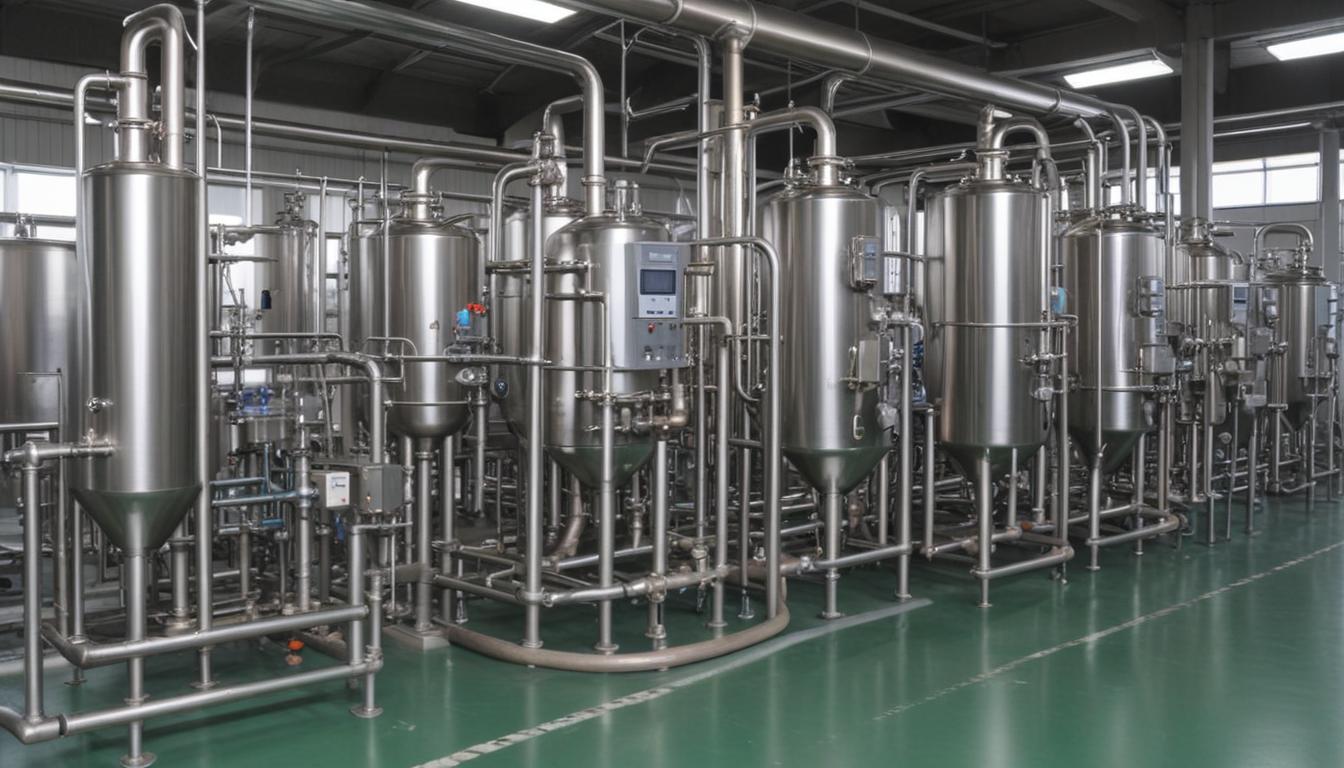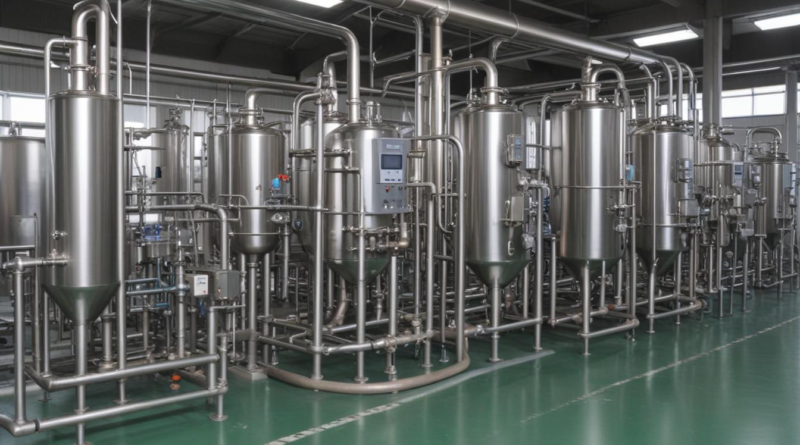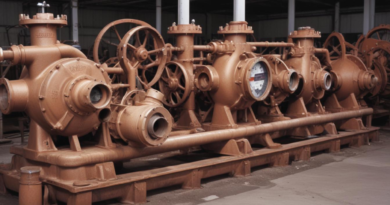pumps used in pharmaceutical ingredient dosing
Pharma dosing pumps are essential in ensuring precise and consistent delivery of pharmaceutical ingredients. Several types of dosing pumps are utilized in the pharmaceutical industry, each with distinct mechanisms and advantages tailored to specific applications.
- Peristaltic Pumps: Utilize a rotating mechanism to compress a flexible tube, propelling the fluid forward. They are ideal for handling shear-sensitive fluids and provide excellent isolation between the pump mechanism and the fluid.
- Diaphragm Pumps: Employ a reciprocating diaphragm to create flow. These pumps are known for their ability to handle a wide range of viscosities and are suitable for sterile applications due to their hygienic design.
- Syringe Pumps: Use a motor-driven syringe to deliver precise volumes of liquid. They offer high accuracy and are commonly used for small-volume dosing where exact control is paramount.
- Gear Pumps: Feature interlocking gears that move the fluid. They are robust and can handle higher pressures, making them suitable for continuous and high-flow-rate applications.
- Piston Pumps: Utilize a piston moving within a cylinder to displace fluid. These pumps provide high accuracy and repeatability, essential for formulations requiring exact ingredient ratios.
| Type of Pump | Key Features | Typical Applications |
|---|---|---|
| Peristaltic Pumps | Flexible tubing, minimal contamination risk, easy maintenance | Shear-sensitive fluids, sterile environments |
| Diaphragm Pumps | Non-contacting mechanism, handles various viscosities | Sterile dosing, precise volume control |
| Syringe Pumps | High precision, programmable dosing | Small-volume applications, research and development |
| Gear Pumps | High pressure handling, durable | Continuous flow processes, high-flow-rate dosing |
| Piston Pumps | High accuracy, repeatability | Exact ingredient ratios, batch processing |
Each type of dosing pump offers unique benefits, making the selection process critical to the success of pharmaceutical ingredient dosing. Understanding the specific requirements of the application, such as fluid characteristics, required precision, and operational conditions, is essential in choosing the most appropriate pump type for optimal performance and reliability.
selection criteria for pumps
Selecting the appropriate dosing pump for pharmaceutical applications involves a careful evaluation of several critical factors to ensure optimal performance and compliance with industry standards. The following criteria are essential when choosing from the various types of pharma dosing pumps:
- Flow Rate Requirements: Determine the necessary flow rate range for the specific application. Pumps must accommodate both minimum and maximum dosing rates to maintain consistency throughout the production process.
- Precision and Accuracy: Evaluate the degree of precision required. High-accuracy pumps are essential for formulations that demand exact ingredient ratios, minimizing variability and ensuring product quality.
- Fluid Properties: Consider the viscosity, chemical composition, and sensitivity of the pharmaceutical ingredients. Some pumps, like peristaltic and diaphragm pumps, are better suited for handling shear-sensitive or viscous fluids.
- Chemical Compatibility: Ensure that the pump materials are compatible with the fluids being processed to prevent corrosion, contamination, and degradation of both the pump and the product.
- Sterility and Cleanability: For sterile dosing applications, pumps must feature hygienic designs that facilitate easy cleaning and sterilization to prevent microbial contamination.
- Ease of Maintenance: Select pumps that are easy to maintain, with readily available spare parts and straightforward procedures for routine servicing to minimize downtime.
- Regulatory Compliance: Ensure that the dosing pumps comply with relevant pharmaceutical regulations and standards, such as cGMP (current Good Manufacturing Practices), to guarantee product safety and efficacy.
- Size and Footprint: Consider the available space within the production facility. Compact pump designs may be necessary for installations with limited space.
- Control and Programmability: Advanced control features, including programmability and integration with automated systems, enhance operational flexibility and precision in dosing processes.
- Cost Considerations: Balance the initial investment with long-term operational costs, including maintenance, energy consumption, and potential downtime due to pump failures.
| Selection Criterion | Considerations | Impact on Selection |
|---|---|---|
| Flow Rate | Required dosing range, variability | Determines pump type and size |
| Precision | Degree of dosing accuracy needed | Influences choice of high-precision pumps like syringe or piston pumps |
| Fluid Properties | Viscosity, chemical composition, sensitivity | Select pump type compatible with fluid characteristics |
| Compatibility | Material resistance to chemicals | Avoid pump materials that react with pharmaceuticals |
| Sterility | Need for sterile environment | Choose hygienic pump designs suitable for sterile dosing |
| Maintenance | Ease of servicing, availability of parts | Opt for pumps with straightforward maintenance protocols |
| Regulatory Compliance | Adherence to industry standards | Ensure pumps meet cGMP and other relevant regulations |
| Size | Available installation space | Choose appropriately sized pumps to fit facilities |
| Control Features | Programmability, automation compatibility | Select pumps with necessary control capabilities |
| Cost | Budget constraints, total cost of ownership | Balance initial and operational costs against performance needs |
By meticulously assessing these selection criteria, manufacturers can identify the most suitable dosing pump types that align with their specific pharmaceutical applications, ensuring efficient, reliable, and compliant ingredient dosing operations.
applications in pharmaceutical dosing
Pharma dosing pumps play a crucial role in various stages of pharmaceutical manufacturing, ensuring that each ingredient is accurately and consistently delivered to maintain product quality and efficacy. Their applications span across multiple processes, each requiring specific pump types and configurations to meet stringent industry standards.
In formulation and mixing, precise dosing is essential to achieve the correct concentration of active pharmaceutical ingredients (APIs) and excipients. Diaphragm pumps and syringe pumps are commonly employed in these stages due to their high accuracy and ability to handle a wide range of viscosities. These pumps ensure homogeneous mixing, which is vital for the stability and performance of the final product.
During aseptic processing, maintaining sterility is paramount to prevent contamination. Peristaltic pumps are often preferred in these applications because they provide excellent isolation between the pump mechanism and the fluid, minimizing the risk of microbial contamination. Their hygienic design facilitates easy cleaning and sterilization, complying with stringent aseptic standards.
In the tablet and capsule production phases, consistent dosing directly affects dosage accuracy and uniformity. Piston pumps and gear pumps are typically used here to deliver precise volumes of liquid binders or lubricants. These pumps offer the reliability and repeatability needed to ensure each tablet or capsule contains the exact amount of each ingredient, adhering to regulatory requirements.
Biopharmaceutical applications present unique challenges, such as handling shear-sensitive fluids like cell cultures or proteins. Peristaltic pumps are particularly suited for these tasks as they can move delicate fluids without applying excessive shear forces, preserving the integrity of the biological materials.
In the liquid filling and packaging process, the speed and accuracy of dosing pumps significantly impact production efficiency and product consistency. Gear pumps and diaphragm pumps are often utilized to maintain high throughput while ensuring that each container is filled with the precise volume of liquid, reducing waste and ensuring customer satisfaction.
Furthermore, in controlled release formulations, the ability to accurately dose ingredients that govern the release rate is essential. Syringe pumps offer the high precision required for these applications, enabling the development of advanced drug delivery systems that provide consistent therapeutic effects over extended periods.
The table below summarizes the primary applications of different types of pharma dosing pumps:
| Application Area | Common Pump Types | Key Benefits |
|---|---|---|
| Formulation and Mixing | Diaphragm Pumps, Syringe Pumps | High accuracy, handles various viscosities |
| Aseptic Processing | Peristaltic Pumps | Excellent isolation, easy sterilization |
| Tablet and Capsule Production | Piston Pumps, Gear Pumps | Reliable dosing, repeatability |
| Biopharmaceutical Applications | Peristaltic Pumps | Low shear, preserves biological integrity |
| Liquid Filling and Packaging | Gear Pumps, Diaphragm Pumps | High throughput, precise volume control |
| Controlled Release Formulations | Syringe Pumps | Ultra-precise dosing, advanced control |
Another critical area where pharma dosing pumps are indispensable is in quality control laboratories. Here, pumps are used for precise sample preparation, reagent addition, and analytical testing processes. The ability to accurately dose small volumes is essential for experimental reproducibility and reliability of test results. Syringe pumps and diaphragm pumps are typically favored in these settings due to their precision and ease of integration with laboratory automation systems.
In waste management within pharmaceutical facilities, dosing pumps are utilized to manage the addition of neutralizing agents or other chemicals used in the treatment of waste streams. Peristaltic pumps are preferred for their ability to handle aggressive chemicals and maintain a contamination-free process environment.
Moreover, during research and development (R&D), the flexibility offered by various dosing pump types allows scientists to experiment with different formulations and processes. Syringe pumps provide the necessary precision for exploratory studies, while peristaltic pumps offer the versatility to handle a broad spectrum of fluids, facilitating innovative pharmaceutical advancements.
The integration of dosing pumps with automation and control systems further enhances their applications. Programmable dosing pumps can be synchronized with manufacturing processes, enabling real-time adjustments and monitoring. This integration not only improves operational efficiency but also ensures compliance with regulatory standards by maintaining consistent dosing parameters.
Overall, the diverse applications of pharma dosing pumps highlight their essential role in the pharmaceutical industry, supporting the production of safe, effective, and high-quality medicinal products.
maintenance and calibration
 Regular maintenance and precise calibration are critical to the reliable operation of dosing systems in the pharmaceutical industry. Ensuring that pharma dosing pumps function optimally minimizes downtime, maintains product quality, and complies with stringent regulatory standards. A comprehensive maintenance and calibration program involves several key activities tailored to the specific types of pumps in use.
Regular maintenance and precise calibration are critical to the reliable operation of dosing systems in the pharmaceutical industry. Ensuring that pharma dosing pumps function optimally minimizes downtime, maintains product quality, and complies with stringent regulatory standards. A comprehensive maintenance and calibration program involves several key activities tailored to the specific types of pumps in use.
Maintenance Procedures:
- Routine Inspections: Conduct visual and functional inspections on a scheduled basis to identify signs of wear, leaks, or other potential issues. Early detection of problems can prevent more significant failures.
- Cleaning: Regularly clean pump components, including tubing, seals, and chambers, to prevent contamination and ensure hygienic operation. Use appropriate cleaning agents compatible with the fluids being handled.
- Lubrication: Apply suitable lubricants to moving parts as recommended by the manufacturer to reduce friction and wear, thereby extending the pump’s lifespan.
- Component Replacement: Replace worn or damaged parts promptly. Commonly replaced components include seals, diaphragms, and tubing in peristaltic pumps.
- Performance Checks: Verify that the pump operates within the specified parameters, such as flow rate and pressure, to ensure consistent performance.
Calibration Procedures:
Calibration ensures that dosing pumps deliver precise volumes as required by pharmaceutical formulations. The calibration process typically involves the following steps:
- Zero Calibration: Ensure that the pump is properly zeroed before initiating the dosing process. This step accounts for any baseline offsets.
- Flow Rate Verification: Measure the actual flow rate using a calibrated flow meter and compare it to the pump’s set point. Adjust the pump settings as necessary to align with the desired flow rate.
- Volume Accuracy: Dispense known volumes into a calibrated container and measure the output to verify accuracy. This is particularly important for high-precision pumps like syringe and piston pumps.
- Repeatability Testing: Perform multiple dispensing cycles to ensure that the pump consistently delivers the same volume each time.
- Documentation: Record all calibration results and adjustments in a maintenance log. This documentation is essential for quality control and regulatory compliance.
Maintenance Schedule: Establishing a structured maintenance schedule helps in systematically addressing all necessary maintenance and calibration tasks. The following table outlines a typical maintenance schedule for different pump types:
| Pump Type | Daily | Weekly | Monthly | Quarterly | Annual |
|---|---|---|---|---|---|
| Peristaltic Pumps | Inspect tubing for wear and replace if necessary | Clean exterior surfaces and check for leaks | Calibrate flow rate and perform performance checks | Lubricate moving parts and replace seals | Comprehensive system inspection and replace tubing |
| Diaphragm Pumps | Check for proper operation and listen for unusual noises | Inspect diaphragms and clean pump chambers | Verify flow rate accuracy and recalibrate if needed | Lubricate internal components and replace diaphragms | Full system calibration and validate performance |
| Syringe Pumps | Ensure syringe alignment and check for blockages | Clean syringe and dispensing area | Calibrate volume dispensed and test repeatability | Inspect motor and mechanical parts | Comprehensive calibration and software update |
| Gear Pumps | Monitor for unusual vibrations or noises | Check and clean inlet and outlet ports | Measure and adjust flow rates | Inspect gears for wear and apply lubricant | Complete system overhaul and performance validation |
| Piston Pumps | Check piston movement for smooth operation | Clean and inspect piston seals | Calibrate dosing volume and verify accuracy | Lubricate cylinder and replace seals if necessary | Full system inspection and recalibration |
Best Practices for Maintenance and Calibration:
- Training: Ensure that all personnel involved in maintenance and calibration are adequately trained and understand the specific requirements of each pump type.
- Standard Operating Procedures (SOPs): Develop and adhere to SOPs for all maintenance and calibration activities to maintain consistency and compliance.
- Documentation: Maintain thorough records of all maintenance and calibration activities. This documentation is essential for audits and quality assurance purposes.
- Proactive Replacement: Replace consumable parts before they reach the end of their service life to prevent unexpected failures and maintain continuous operation.
- Environmental Controls: Ensure that the environment where the pumps operate is controlled for temperature, humidity, and cleanliness to prolong pump life and maintain accuracy.
By implementing a rigorous maintenance and calibration regimen, pharmaceutical manufacturers can ensure that their dosing systems remain reliable and precise. This not only enhances the quality and consistency of pharmaceutical products but also supports compliance with regulatory standards, ultimately contributing to the overall success of pharmaceutical operations.
trends and innovations
The pharmaceutical industry is continually evolving, driving significant advancements in dosing pump technology to meet the increasing demands for precision, efficiency, and regulatory compliance. Recent trends and innovations in pharma dosing pumps are shaping the future of pharmaceutical manufacturing, enhancing both the capabilities and reliability of these critical systems.
Digital Integration and Smart Technologies:
The incorporation of digital technologies into dosing pumps has revolutionized their functionality and ease of use. Smart dosing pumps equipped with advanced sensors and microprocessors enable real-time monitoring and control, allowing for precise adjustments based on process requirements. Features such as touchscreen interfaces, programmable dosing profiles, and connectivity with manufacturing execution systems (MES) facilitate seamless integration into automated production lines.
- IoT Connectivity: Integration with the Internet of Things (IoT) enables remote monitoring and data collection, providing valuable insights into pump performance and operational efficiency.
- Advanced User Interfaces: Intuitive interfaces improve user interaction, making it easier to configure settings, monitor operations, and troubleshoot issues.
- Data Analytics and Machine Learning: Leveraging data analytics helps in predictive maintenance, optimizing dosing accuracy, and reducing downtime through proactive issue identification.
Materials and Design Enhancements:
Innovations in materials science have led to the development of dosing pumps with superior chemical compatibility and durability. Advanced materials such as biocompatible polymers and corrosion-resistant alloys extend the lifespan of pumps and reduce the risk of contamination.
- Biocompatible Materials: Enhanced materials ensure that pumps can handle a wider range of pharmaceutical ingredients without degradation or leaching of contaminants.
- Modular Designs: Modular pump systems allow for easy customization and scalability, enabling manufacturers to adapt quickly to changing production needs.
- Lightweight and Compact Structures: Improved designs reduce the footprint of dosing pumps, making them suitable for installations with limited space.
Enhanced Precision and Control:
Advancements in control algorithms and motor technologies have significantly improved the precision and accuracy of dosing pumps. High-resolution stepper motors and closed-loop control systems ensure consistent dosing even in complex formulations.
- Closed-Loop Systems: Feedback mechanisms continuously adjust dosing parameters to maintain accuracy despite variations in fluid properties.
- Stepper and Servo Motors: These motors provide finer control over dosing volumes, essential for applications requiring ultra-precise ingredient delivery.
- Microfluidic Integration: Combining microfluidics with dosing pumps allows for the handling of extremely small volumes, expanding their applications in research and development.
Energy Efficiency and Sustainability:
Sustainability is becoming a key consideration in pump design, with manufacturers focusing on reducing energy consumption and minimizing environmental impact. Energy-efficient motors and optimized pump mechanisms contribute to lower operational costs and a smaller carbon footprint.
- Energy-Efficient Motors: Incorporating motors that consume less power without compromising performance helps reduce overall energy usage.
- Eco-Friendly Materials: Utilizing recyclable and environmentally friendly materials in pump construction supports sustainable manufacturing practices.
- Optimized Pump Cycles: Designing pumps that require fewer cycles for the same dosing volume enhances efficiency and extends the pump’s operational life.
Automation and Industry 4.0:
The integration of dosing pumps into automated manufacturing systems aligns with the Industry 4.0 paradigm, promoting interconnected and highly flexible production environments. Automated dosing systems enhance production speed, reduce human error, and ensure consistent product quality.
- Robotic Integration: Coupling dosing pumps with robotic systems facilitates automated ingredient handling and dispensing, streamlining production workflows.
- Scalability: Automated systems can easily scale up or down based on production demands, providing manufacturers with the flexibility to respond to market changes.
- Real-Time Quality Control: Automated dosing systems allow for continuous quality monitoring, ensuring that each batch meets stringent pharmaceutical standards.
Remote Monitoring and Predictive Maintenance:
Advancements in connectivity and data analytics enable remote monitoring and predictive maintenance of dosing pumps. These capabilities help prevent unexpected downtime and extend the lifespan of equipment by addressing issues before they escalate.
- Real-Time Diagnostics: Continuous monitoring of pump parameters allows for the immediate detection of anomalies and performance deviations.
- Predictive Maintenance Algorithms: Utilizing machine learning algorithms to predict maintenance needs based on usage patterns and historical data reduces the likelihood of pump failures.
- Remote Access: Technicians can access pump data and perform diagnostics remotely, improving response times and reducing the need for on-site interventions.
Innovative Pump Types and Configurations:
Emerging pump technologies and novel configurations are expanding the range of applications for pharma dosing pumps. Innovations such as multi-channel pumps and hybrid pump systems offer enhanced flexibility and functionality.
- Multi-Channel Pumps: These pumps can handle multiple fluids simultaneously, enabling complex formulations and reducing the need for multiple individual pumps.
- Hybrid Pump Systems: Combining different pump types or technologies within a single unit allows for versatile operation and the ability to handle diverse fluid characteristics.
- Micro-Pumps: Miniaturized pump designs cater to niche applications requiring extremely small dosing volumes, such as personalized medicine and high-throughput screening.
| Trend/Innovation | Description | Benefits |
|---|---|---|
| Digital Integration | Incorporation of IoT, advanced sensors, and smart interfaces | Enhanced monitoring, real-time control, and data-driven decision making |
| Advanced Materials | Use of biocompatible and corrosion-resistant materials | Increased pump longevity, reduced contamination risk |
| Precision Control | Closed-loop systems and high-resolution motors | Improved dosing accuracy and consistency |
| Energy Efficiency | Implementation of energy-saving motors and optimized mechanisms | Lower operational costs and reduced environmental impact |
| Automation | Integration with robotic systems and automated workflows | Increased production speed and reduced human error |
| Remote Monitoring | Use of IoT and predictive maintenance algorithms | Minimized downtime and extended pump lifespan |
| Innovative Pump Types | Development of multi-channel and hybrid pumps | Greater flexibility and ability to handle complex formulations |
These trends and innovations are driving the transformation of pharma dosing pumps, making them more intelligent, efficient, and adaptable to the evolving needs of the pharmaceutical industry. As manufacturers continue to adopt these advancements, the precision, reliability, and overall performance of dosing systems are expected to reach new heights, ultimately contributing to the development of higher quality pharmaceutical products.



